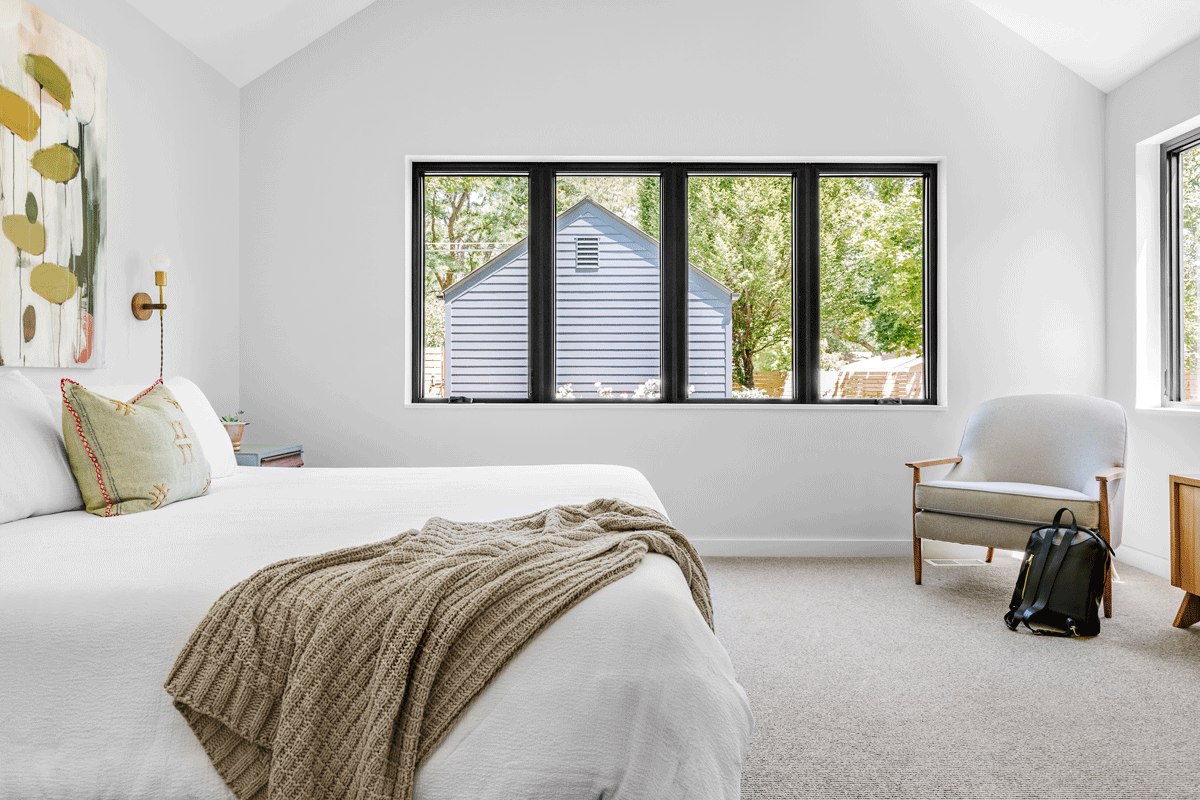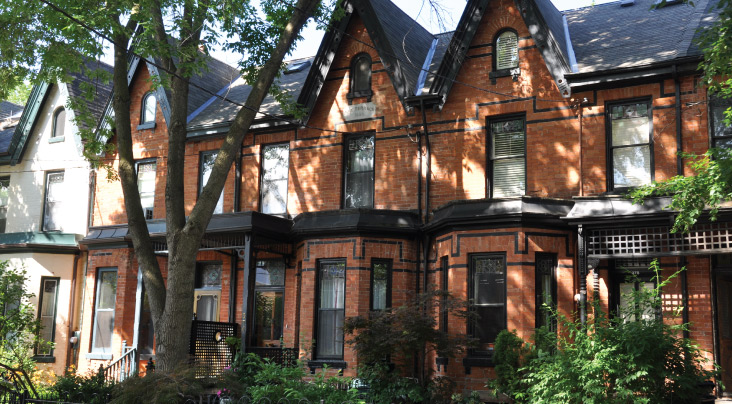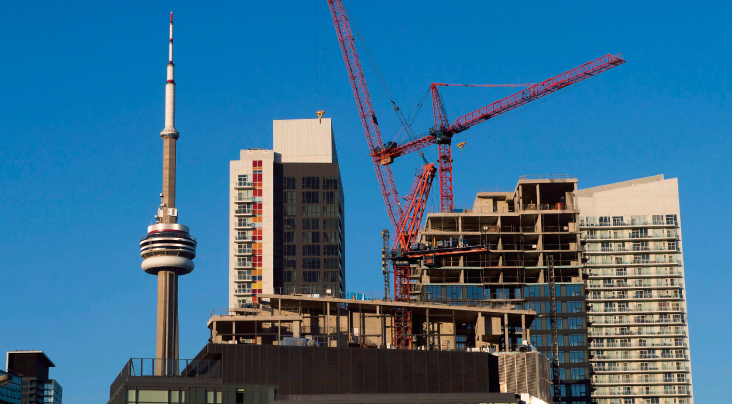Great debate on Friday, right?
The one between blog reader Chris and newfound pen-pal, “Alex.”
Or maybe I’m being sarcastic?
Good for you guys for being able to identify properties through your own sleuthing, because God forbid, I were to post sales data, well, I’d be in trouble with the real estate boards. Imagine that? Posting sale data? God. It’s so much better sticking to the rules that prohibit real estate agents from helping people, providing them with valuable information, being transparent, etc.
Or maybe I’m being sarcastic?
One of the properties for which I used an amusing photo array was the subject of debate, since it sold for “way over asking,” and was thus deemed to be impressive.
I’m 5’11’. If I stood up on a 3-inch block, would that make me 6’2″?
When a house is listed for $599,900 and sells for $913,000, it doesn’t always mean that a great sale price was achieved, or that a good job was done. Even a sophomore-onlooker must know that the “sale-to-list” ratio has become meaningless in Toronto, just as the “SOLD OVER ASKING” sign-riders have plummeted in production.
Here’s the house the readers were discussing:
So what’s the conclusion here?
Well, I have to agree with Alex on this one. The $913,000 sale price was absolutely out of this world.
This house was basically a gut. And in my honest opinion, the value was somewhere around $850,000. To see this sell for $913,000 was absolutely astonishing! That’s a February-price right there, maybe more. It’s only an 85-foot lot, and the street is awesome, but the house was in awful shape.
So did under-listing work?
Absolutely, it did!
And this is what is so frustrating to buyers, sellers, listing agents, buyer agents, and general onlookers, because there’s no rhyme or reason to what’s working and what’s not these days.
I can’t tell you how many properties I’ve seen listed low with an offer date that have then been terminated, and re-listed at a higher price.
Perhaps this is a property that would have been listed at $699,900 in February or March, and in these “challenging times,” as the saying goes, listing the property even lower was what did the trick.
Love the strategy, or hate it. There’s no denying that it worked.
And in case it’s not obvious, this was a bully offer. See the “DOM” or days on market was only a single day. An excited, emotional buyer came in with a ridiculous offer; one that I don’t think the seller would have ever seen on “offer night.”
So there’s a new spin on an old trick; taking the concept of “under-listing” to another level, and receiving a bully offer.
But what about just the run-of-the-mill under-list with an offer-night?
How about this one:
Again, I’m not sure the wheel was reinvented here.
This is a 1-plus-den, just over 700 square feet.
The last two sales for this model:
1) List Price: $720,000, Sale Price: $695,000 – April 29th
2) List Price: $699,000, Sale Price: $683,000 – May 8th
All these folks did was list the property below what a bachelor condo in the same building would sell for, and set an offer date.
But, and there’s a but; look at the days on market. They held back offers for 12 days, through two weekends. Typically, we see “offer nights” six or seven days after the property is listed. So did the listing agent do a better job here by leaving the property up longer? I could argue it either way.
On the one hand, leaving the property up longer before entertaining offers could allow the buyer to cool off, and/or find other options.
On the other hand, leaving the property up longer before entertaining offers could allow far more potential buyers to view it.
In the end, the property sold almost exactly between the last two comparable sales.
–
Now for this next one, get used to seeing it:
They want 48 hours on the offer.
And if you noticed that this formatting looks different from the usual MLS remarks, that’s because I had to pull this from the listing history, as it was changed.
Changed to what, you ask?
Changed to this:
So what happened here?
Well, it looks like the house was listed with “offers any time” since no offer date was posted. However, we all know the 48-hour irrevocable is another strategy used in the past, which we call the “soft holdback.” Don’t specify that offers are to be reviewed on Tuesday, May 19th at 7:00pm, but rather list the property with no offer date and then ask for 48 hours.
As a result, a house like this, which is under-priced, may organically end up with multiple offers.
That’s what happened, of course, and the listing was updated to reflect “offers registered,” as in offers-plural.
They still wanted 24 hours on the offers, which might mean the sellers were, in fact, out of town. Kudos to the sellers and the listing agents for leaving town when the listing was up, since that is the best way to sell in this pandemic-market. But it’s tough, since “sellers are out of town” is one of the biggest B.S. lines we see on listings.
–
Here’s one that I call the “drugs” approach to pricing, since it’s one that can only be utilized by those who are clearly on drugs.
Imagine you’re a property developer and the goal, obviously, is to sell the property for the highest possible price. However, you must also be cognizant of your carrying costs, and thus you must balance the time it takes to sell, and thus the costs incurred over that time, along with the actual sale price.
We’re used to seeing builder’s properties listed high, and gradually reduced in price over time. But surely there’s a method to this, no? There must be a formula for how long one can hold a property and incur carrying costs before it would have just made sense to sell it at a lower price at the onset?
This listing that I’ve been watching has a long history. Just for fun, here it is, dating back to 1986:
It’s kind of neat, because the 2017 sale shows the name of family that I went to school with in the 1980’s and 1990’s. In fact, my sister was in love with the kid who lived here throughout Grade 7 and Grade 8, and she could have had him on the first day of Grade 7, but she turned him down!
Just like in real estate, sometimes the first offer is the best one…
So this house sells in June of 2017 for $1,450,000, which is sad, because they’d have got at least $1,600,000 for it in March of that year. The drop in 2017 was pronounced, as we all know, and this was their retirement.
A builder purchases the house and two years later (long time for a build, no?) lists the house for $2,879,000. Some 52 days on the market, and no sale.
As you can see, this goes on for quite some time. Listing in August, then September, then November.
Then the property comes off the market for a few months, and comes back onto the market on March 5th for $2,649,000. Now, looking back, I think March 5th is the best week of 2020, right? These guys tried the house at $2,649,000 in September, then $2,649,000 in November, then after two unsuccessful attempts, they try it at – what price – in March?
$2,649,000
The property doesn’t sell. So it’s not worth $2,649,000, or anywhere even close, right?
Along comes a little something called COVID, and we all know what happens. Showings drop by 95%, sales by 60-70%, and the month of April is a barren wasteland for Toronto real estate.
Then on May 6th, the sellers decide to re-list the property.
Having been priced at $2,649,000 for 61 days, starting on March 5th, and ending on May 5th, they put their heads together, what with the pandemic and all, and come up with the price of….
….$2,649,000.
This is a $2,450,000 house on a good day. The location is amazing and the house specs are fair on paper, but this is an out-of-area builder who doesn’t know what the buyers in this market want, and the layout and features show it. I see this time and time again. All they have to do is feign interest and call a local agent, ask a few questions, and work their build around that. But they all assume they know best, and can build a better home.
This is the result.
The pricing here makes absolutely no sense, and it’s been a full year on the market. I would assume carrying costs of $10,000 per month. That’s a lot of juice!
–
Of course, not every listing is selling over list. I don’t want it to seem as though this is the argument I’m promoting, so let’s look at a few others.
Let’s start with some condos.
Here’s a really great job by the listing agent, and by the sellers, who stuck to their guns:
This property was on the market for a whopping fifty-four days, having been listed on March 21st, a mere four days after the state-of-emergency was put into place, and sold on March 14th for 99% of the list price.
Let’s look at another property with similar days on market, but this one was listed on March 6th, ie before the pandemic started:
Listed on March 6th, sold on May 1st, a total of 55 days on market, and only 93% of the list price.
Now what about a property that was listed low with an “offer date,” then raised the price?
How about this one…
Listed on March 17th for $749,000 with an offer date.
Raised in price to $849,000 on March 24th:
Sells for $828,000 after 51 days on market.
Do you wonder what offers, if any, they turned down on “offer night” back on March 23rd?
Similar story here, except these guys got far closer to their original ask:
This was listed for $689,000 on March 16th, which was literally the last day before the world ended. Awful timing, right?
With an offer date that followed, the price was then raised to $749,999.
And after 50 days on the market, the property sold for $700,000, or 93% of the list price.
To be fair, this property was in original condition (broadloom in bedrooms, plastic kitchen counter, etc), and was not staged. So they’re not doing poorly here at $700,000 during a pandemic, after a bit of a failed offer/pricing strategy, and listing at the worst possible time.
–
As for houses, most have done well, at least in relation to list price and/or strategy.
If I’m looking for distressed sales, which I think is what a good portion of the readers are interested in, two stand out in my mind.
This one sold on March 29th, and it was shocking to see a house sell in this area for 93% of the list price:
Then on April 7th, this one sold for $150,000 under the list price:
But these were at least six weeks ago.
And I haven’t seen anything like this since, at least not in the core.
Here’s one in the same area as the house shown two above, from last week:
And here’s one that was listed at a “laughable” price when it came out, but it sold conditionally in one day, and went firm after five days:
I, for one, would have thought the luxury market would be slow. Very slow. This might be a one-off though.
So it’s been a real mixed bag, folks.
Prices through the roof like the first one that sold for $913,000, which is beyond February pricing.
Prices at 90% of list when things were rough at the start of April.
Listing low, listing high, and re-listing too.
Offer nights, offers anytime, and “soft holdbacks.”
Record lows and record highs.
And this is why the market is proving so tough for all those involved.
My team and I are finally starting to list again, after about two months of holding back. That was partially because of social responsibility, and partially because of market conditions. But I do see things getting better out there, so here’s to a busy summer ahead!














































Appraiser
at 7:12 am
Much like the weather, the spring real estate market has been delayed not cancelled.
J G
at 8:04 am
Dow up 900 yesterday, where was the market update?
Appraiser
at 9:07 am
The Dow Jones Index is down 17% from the peak in February. Now your updated.
jeanmarc
at 1:03 pm
Market is heavily weighted on a selected number of stocks. Amazon, Facebook, GOOG, Tesla, Apple, Microsoft. All of which have recovered and hitting new highs. Very deceiving when you look at the rest of the market still falling behind from recovery. Oil prices (WTI crude) have skyrocketed from it’s negative last month. Both of these indices have been manipulated up. We are in a recession. Something will eventually give back.
J G
at 4:45 pm
Amazon, Facebook, Netflix, Tesla all have reached all time highs surpassing Feb peak. Google and MSFT almost there too.
Perma bulls are just upset because they still aren’t able to collect (all) their rent in May, after already 50 email exchanges with tenant.
jeanmarc
at 5:13 pm
V shaped recovery exactly what Trump is trying to portray as a savior to the US voters coming November election. The Canadian economy is so joined to the US. Never know what will happen after he wins again. As US ex-Fed chairman Alan Greenspan stated many times in the early 2000’s about the stock market. “Irrational Exuberance”.
Jimbo
at 9:06 am
That rebuild that hasn’t sold would incur HST correct?
David Fleming
at 9:45 am
@ Jimbo
It should, but you know builders are very good at finding ways around this. They’re also good at avoiding TARION registration, either by saying this is a “substantial renovation” or by claiming that they built it for themselves and their family, then changed their mind and went to sell it.
Appraiser
at 12:43 pm
Inventory already falling:
“…Most interesting thing to me is continued drop in MOI, signalling market is tightening back up…” ~Scott Ingram CPA, CA
https://twitter.com/areacode416
Appraiser
at 12:48 pm
“Over the past five weeks sales have been increasing on a week over week basis but because new listings have increased at a slower rate, the market has actually become more competitive. We can see this in the Months of Inventory which is trending down.” ~LG
https://twitter.com/JohnPasalis?ref_src=twsrc%5Egoogle%7Ctwcamp%5Eserp%7Ctwgr%5Eauthor
Chris
at 12:50 pm
Incorrect link.
Chris
at 12:49 pm
LG JP weekly update:
– Sales down 53% YoY
– New listings down 51% YoY
– MOI at ~3, down from 3.5 a few weeks ago
https://twitter.com/johnpasalis/status/1262779250584817668
Chris
at 12:51 pm
“ Prices have remained stable and the market has been getting more competitive every week since mid April.
Check back in 6 months”
LG JP
https://twitter.com/johnpasalis/status/1262773123117658120?s=21
Bal
at 4:36 pm
So a balanced market?
Chris
at 6:12 pm
I forget exactly where the experts tend to draw the line in the sand for Toronto to be balanced, measured by MOI. But it’s higher than it was a few months ago, so closer to balance.
Not Harold
at 5:20 pm
So the M4G house on 27×240 ft lot?
$4MM???
What in the world? There are so many nice, larger houses in better locations for that kind of money! People love that area but seriously?
Chris
at 6:13 pm
“Looking at debt multiples of disposable income, that measure will climb from 176 per cent in late 2019 to well over 200 per cent through 2021. Moreover, CMHC is now forecasting a decline in average house prices of 9 – 18 per cent in the coming 12 months. The resulting combination of higher mortgage debt, declining house prices and increased unemployment is cause for concern for Canada’s longer-term financial stability.”
https://www.cmhc-schl.gc.ca/en/media-newsroom/speeches/2020/supporting-financial-stability-during-covid19-pandemic
Chris
at 6:35 pm
“We feel we need to avoid exposing young people (and through CMHC, Canadian taxpayers) to the amplified losses that result from falling house prices …a 10 per cent down payment offers more of a cushion against possible losses.
Our support for homeownership cannot be unlimited. Homeownership is like blood pressure: you can have too much of it …So if housing affordability is our aim, as surely it must be, then there must be a limit to the demand we help to create“
Pragma
at 10:12 am
I would recommend everyone read that speech, from one of the most knowledgeable people in this industry. It is an incredible change of tone. Acknowledging that their policies created demand and suggesting they might change the minimum downpayment to 10%. Making it clear that debt levels are at dangerous levels and that it is toxic for the broader economy. I’ve never seen CMHC as blunt or dour as this. They’ve always held the party line – “We’re monitoring conditions, risk is elevated, but their are no signs of instability”
Chris
at 10:53 am
Agreed, the speech is well worth reading in its entirety. It is a very sharp turn for CMHC, and about as clear a signal as there can be that they will not be taking any action whatsoever to support demand. Further, seems likely that 10% down payment will become the new policy.
It should also put to rest some talking points that others here have asserted, such as that high debt burdens don’t make the economy more vulnerable, or that the bottom of the market is in the rear view mirror.
Caprice
at 11:05 am
From Rate Spy:
“What it Could Mean: Some will take Siddall’s comments to mean the days of 5% down payments are numbered. Siddall told Parliament’s Standing Committee on Finance that, “We’re talking to our board of directors this week…we may restrict the business we do in the short run.” But Siddall tells us that “We have made no decisions” with respect to down payments, and reminds us that down payment increases on insured mortgages would be the Minister of Finance’s purview, not CMHC’s. And “there’s no talk of that [e.g., 10% minimum down payments across the board] right now.” Indeed, a 10% minimum down payment would protect borrowers, but it would also be pro-cyclical, meaning it could remove demand from a weak market and accelerate price declines. That’s why Siddall adds, “We need to be careful not to act precipitously” and he stresses that “We expect any economic slowdown to be temporary.” CMHC is projecting a rebound in housing to pre-COVID levels by sometime in 2022.
There are Still Two Other Insurers: It’s possible that one or both of CMHC’s two private competitors could continue insuring mortgages in market segments that CMHC pulls back on.”
https://www.ratespy.com/ominous-data-from-cmhc-051913826
Chris
at 11:20 am
“Evan Siddall of CMHC today: “a 10% down payment offers more of a cushion against possible losses”
Canada just kissed 5% down payment GOODBYE”
– Ron Butler
https://twitter.com/ronmortgageguy/status/1262871390509830144
“Basically what I’m reading into this is CMHC is strongly considering getting rid of the 5% down payment as being allowed, and forcing borrowers to come up with 10% down, minimum, to get into the market.”
– Jake Abramowicz
I doubt that Siddall comes out and gives a speech like that, without some sort of planned changes coming.
Jimbo
at 12:02 pm
What I think is interesting is they talked about surpassing 200% debt to income ratio.
It will be a tailwind on the economy, just what parts of the economy; automobiles, clothing, memberships, etc. I don’t think it hurts housing much.
Even in the cheapest cities you can go into 300% territory and have no issues paying your debts and over consuming.
Chris
at 12:08 pm
“Canadians are among world leaders in household debt. Pre-COVID, the ratio of gross debt to GDP for Canada was at 99 per cent. Due in part to increased borrowing but even moreso to declines in GDP, we estimate it will increase to above 115 per cent in Q2 2020 and reach 130 per cent in Q3, before declining.”
My question is, are CMHC predicting a >200% debt to income ratio because of more debt? Or is it because of lower incomes? Based on their assessment of debt to GDP, sounds like it’s less debt growth, and more a result of lower output.
Pragma
at 1:44 pm
My interpretation of that was that it would not be the numerator that would grow, it would be the denominator that would shrink.
Thomas
at 12:22 pm
Do we have any idea of what % of home sales in the GTA go with a down-payment less than 20%? Is it large enough to have any kind of impact on sales?
Chris
at 12:24 pm
“About 65% to 80% of purchases are 20% down or more
Huge variances by region”
– Ron Butler
https://twitter.com/ronmortgageguy/status/1262889854033104904
Caprice
at 1:39 pm
So basically doesn’t affect the majority of buyers. Personally, I don’t see them increasing the downpayment requirement at this time, the Feds are frantically throwing out bags of money to keep everyone afloat. Even if they do, buyers will beg, borrow and steal to come up with 10%. People want what they want.
Caprice
at 1:41 pm
Also, from Mortgage Jake’s blog:
“What would I do right now if I was a BUYER? I would tell ALL of my first-time buyers with minimal down payment to get hustling and moving. While I admire CMHC’s point that we need to protect us from ourselves, and that it is possible we’ll see a decline in house prices (very possible), I also feel that this move will push a LOT of people into the rental market, further away and not closer to the dream of home ownership. Which is why CMHC was created in the first place! To make homeownership a reality.”
https://mortgagejake.com/bye-bye-5-down/
Thomas
at 2:24 pm
If it is 65% in GTA, I would expect that to have an impact on the short term demand. This is a welcome move but it isnt enough by itself. There should be more controls in place to make at least the starter homes more affordable. That could be higher taxes for second or further homes, foreign investor tax etc.
Thomas
at 2:27 pm
“There should be more controls in place to make at least the starter homes more affordable.”
What I wanted to convey is that it should be easier for first time home buyers and there should be measures to discourage people from buying more houses only as ‘investments’
Chris
at 2:56 pm
“So basically doesn’t affect the majority of buyers.”
The majority, no. But 20-35% isn’t an insignificant number either.
“Personally, I don’t see them increasing the downpayment requirement at this time, the Feds are frantically throwing out bags of money to keep everyone afloat.”
Personally, I would take the other side of that bet. Raising the minimum down payment isn’t going to directly cause people to financially sink.
“What would I do right now if I was a BUYER? I would tell ALL of my first-time buyers with minimal down payment to get hustling and moving.”
We’ve beaten the rent vs. buy debate to death, but in this case, if Jake says that hose prices declines are very possible, and I have 5% down, why would I rush to purchase if I think prices will fall by 9-18% soon? Doesn’t make a whole lot of sense to me…
“Which is why CMHC was created in the first place! To make homeownership a reality.”
That’s why CMHC was initially created, but their current mandate is “to make housing affordable for everyone in Canada.” Which includes both home ownership and home renting.
Chris
at 4:24 pm
“I talked to a couple of people plugged into political messaging
There is ZERO chance he didn’t run this past Morneau prior to the presentation
They are now sitting back and checking the reaction”
– Ron Butler
https://twitter.com/ronmortgageguy/status/1263199230837043201
Butler also estimates that 11-17% of purchases are made with 5% down.
jeanmarc
at 10:38 pm
Six days ago, our fearless finance leader Morneau didn’t even know Canada’s fiscal numbers.
https://tnc.news/2020/05/14/bill-morneau-repeatedly-dodges-questions-about-canadas-balance-sheet/
Liberals are spending like a drunken sailor. The true deficit (through audit) will no doubt balloon much greater than their $250billion. Tax payers will be paying for decades to come.
Libertarian
at 9:35 pm
The house that was listed for $599K and sold for $913K, is that really an awesome job done by the listing agent or a bad job by the buyer agent?
Isn’t there a good chance the buyer could have gotten that house for way less?
Considering how much the buyer is now going to spend renovating the place, that’s a lot of money to spend considering the alternatives that have been available.
Chris
at 9:42 am
For those of you that were worried all this government largesse would lead to hyperinflation:
“Canadian inflation went negative for the first time since the 2009 recession after the coronavirus lockdown put the brakes on the world economy.
Consumer prices dropped 0.2 per cent in April from the same month a year earlier, Statistics Canada reported Wednesday from Ottawa. That’s down from a 0.9 per cent annual rate in March and 2.2 per cent in February.”
https://www.bnnbloomberg.ca/inflation-falls-below-zero-in-canada-for-first-time-since-2009-1.1438680
Bal
at 12:25 pm
How will this impact house prices…….prices are still high, so does that mean it will go further high?
Chris
at 12:27 pm
I doubt that deflation will be supportive to home prices, but I can’t predict the future. Also, CMHC forecasting price declines:
“Moreover, CMHC is now forecasting a decline in average house prices of 9 – 18 per cent in the coming 12 months. The resulting combination of higher mortgage debt, declining house prices and increased unemployment is cause for concern for Canada’s longer-term financial stability.”
Bal
at 12:30 pm
Thanks….
Chris
at 12:38 pm
No problem Bal!
Caprice
at 2:31 pm
“We thought the market would hit pause for a while, and that sellers would be stepping in,” says John Pasalis, president of Realosophy. “Over the past couple of weeks, we saw buyers coming in, but not sellers. We have fewer listings now than we had two weeks ago and sales are even slightly picking up.”
https://www.morningstar.ca/ca/news/202278/residential-real-estate-a-reckoning-or-just-a-softening.aspx
Chris
at 2:50 pm
From his update on Tuesday, sales are down 53% YoY while new listings are down 51% YoY. Seem to be keeping pace with each other quite well.
Caprice
at 6:02 pm
I’m not surprised by the fewer listings. Sellers will not list in a potentially declining market unless they absolutely have to. From the Rate Spy article above, “Canadians do a very good job of paying their mortgages even when they’re underwater.”
Chris
at 6:11 pm
“A team is at work within CMHC to help manage a growing debt “deferral cliff” that looms in the fall, when some unemployed people will need to start paying their mortgages again. As much as one fifth of all mortgages could be in arrears if our economy has not recovered sufficiently.”
– Evan Siddall
Sounds like CMHC is worried about 20% of mortgages not being paid. This is probably part of the reason why John Pasalis, Steve Saretsky, etc., are talking about pent-up supply, more so than pent-up demand.